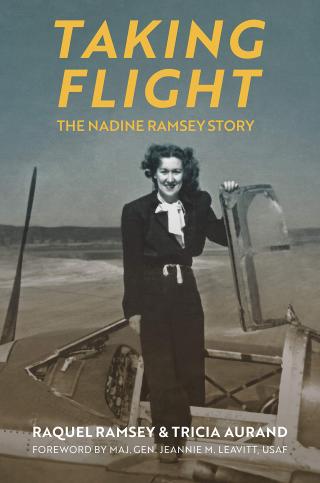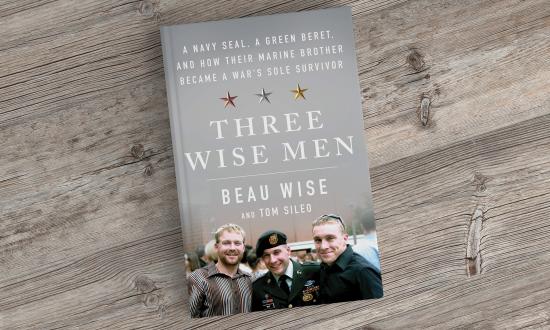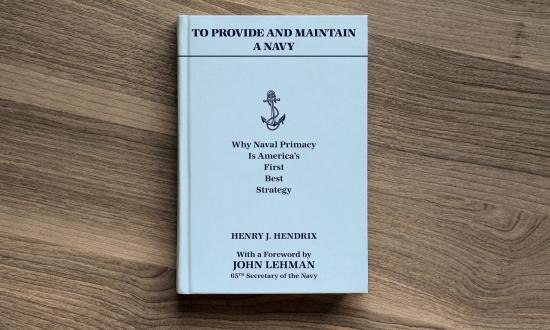Rock the Boat: Embrace Change, Encourage Innovation, and Be a Successful Leader
Rear Admiral Danelle Barrett, U.S. Navy (Retired). Austin, TX: Greenleaf Book Group, 2021. 256 pp. Appx. $15.95.
Reviewed by Lieutenant Colonel Dillon Fishman, U.S. Marine Corps Reserve
Leadership literature abounds with recommended formulas, lists of steps, and simplistic rules for improved performance. In contrast, retired Rear Admiral Danelle Barrett challenges the formulaic approach, contending that leadership is a fundamentally human endeavor that should not be reduced to math. To Barrett, leadership is about people, and “leadership and mentorship are two sides of the same coin.”
Thus, instead of a prescription, Barrett offers three principles: (1) Inspire and connect; (2) Find three positive lessons from every situation; and (3) Don’t be a jerk. Looking back on a 30-year career as a naval officer, Barrett uses sea stories, anecdotes, and advice to illustrate various applications of these principles.
At first glance, the guidance “inspire and connect” might seem vague. But it is the keystone of Barrett’s leadership approach—and critical to success. Leaders in any large bureaucratic organization, including the military, will recognize the difficulty in working to bridge relationship distance across the hierarchy to inspire and connect. Against that background, Barrett illustrates ways she has worked to connect, including soliciting feedback, prioritizing face-to-face engagement, and emphasizing personalized mentoring relationships.
Stylistically, Rock the Boat reads like an extended mentoring conversation. Barrett eschews any literary persona, frankly sharing personal vignettes and even memorable unflattering moments. For example, she recounts when she jammed a finger in her underwear elastic, tearing a ligament that required her to wear a splint for weeks. Nor did she make up a cover story. Instead, Barrett demonstrated how she finds three positive lessons in every situation, including learning not to rush.
Sea stories stand out as an important leadership tool for Barrett, and it is clear that she has used them to inspire and connect during her own career. Through such stories in the book, Barrett recounts her struggles and shortcomings, ranging from juggling multiple jobs in college to aiming for work-life balance as an active-duty parent. Such revelations make Barrett relatable, rather than some distant, Delphic admiral. The personal and humorous disclosures counterbalance the book’s one peccadillo: points where the author’s imperatives—do this, be that—may begin to feel a bit excessive.
That small quip aside, Barrett has curated the lessons that mattered most during her 30-year career involving communications, technology, and innovation. While few of the ideas are radical concepts, in practice they challenge conventional thinking, especially in large bureaucratic organizations. For instance, Barrett shows her commitment to feedback by creating a format and forum for suggestions. By scheduling weekly blocks of time to walk around to get to know different people, Barrett shows how it can work even for leaders of large organizations.
Likewise, Barrett’s signature expectations document—captured in an excellent appendix—adds meat to the hollow bones of many cliché command philosophy publications. Indeed, as just one example of failed mentoring, it is widely lamented throughout the military that most supervisors are months late completing annual performance evaluations. Such habitual tardiness diminishes inspiration and connection, and also runs perilously close to violating the admonition not to be a jerk.
Perhaps Barrett’s greatest contribution to leadership literature is that her work provides a strong defense of its own central lesson: mentoring matters. As workplaces become increasingly distributed across time and space, leaders will benefit from practical suggestions for personalized leadership through intentional mentoring. Uniformed and civilian leaders at all levels will find fresh insights in the book’s combination of stories and counsel.
Lieutenant Colonel Fishman, a Marine Corps judge advocate, is completing a PhD in leadership studies. He deployed twice to Afghanistan and once on board the USS Tortuga (LSD-46).
DIVIDED ARMIES: INEQUALITY AND BATTLEFIELD PERFORMANCE IN MODERN WAR
Jason Lyall. Princeton, NJ: Princeton
University Press, 2020. Tables. Figs. Maps. Appx. Biblio. Index. $35.
Reviewed by Commander Eric Schuck, U.S. Navy Reserve
This is not a trivial book or an “easy read” left casually on the nightstand or positioned strategically on a coffee table for others to peruse. Rather, Jason Lyall’s Divided Armies is one of those texts that anyone attending a war college or planning on service as a senior policy advisor should read. A profoundly detailed effort, it quantifies and codifies how social stratification, in particular ethnic inequality, influences battlefield performance. And while the conclusions are unsurprising—social inequality and ethnic divisions are corrosive to military success—that does not diminish their importance to modern military strategists and planners or the criticality of this effort.
While effectively case-study driven, this research is distinguished by the scope and scale of the underlying dataset. Project Mars, a database funded in part by the Air Force and capturing the role of ethnic inequality in more than 250 largely state-on-state conflicts since 1800, is used first to assess how socially unequal a state’s military forces are; and then uses those measures of inequality to create a battlefield performance index (BPI). Variations in BPI are then compared across forces to predict their relative performances both in actual and hypothetical conflicts through time.
If that sounds complicated, it is. However, this complexity allows the creation of a variety of counterfactual scenarios to gauge the thresholds where inequality begins to adversely affect battlefield performance, and in what ways. Specifically, the analysis allows estimation of how likely a force is to experience disproportionate casualties, suffer mass desertions, or require deployment of “blocking forces” (such as those used by the Soviets during World War II) to ensure battlefield discipline.
The research also provides insights into the point when ethnic inequality leads to “double wars”—that is, when military forces start engaging perceived domestic enemies as much as, and in some cases more than, external threats. By including this measure, Lyall helps identify the threshold where inequality starts dissolving the bond between soldiers and the state they serve and provides a key insight into how and where multiethnic states start to collapse during conflicts. Knowing and understanding how that occurs provides valuable perspective into ongoing conflicts in both the Middle East and Africa.
Taken as a whole, Lyall’s book is as thought-provoking as it is challenging. It provides one of the most profound appraisals of how social divisions translate into weakened performance on the battlefield. Furthermore, Lyall seeks to explain how creating socially and politically inclusive institutions before periods of conflict ultimately translates into stronger, more capable, and above all, more durable military forces. As such, Divided Armies both provides an appraisal and points toward a prescription. Both of those will only grow in relevance. The global prevalence of societies fractured or fracturing along ethnic lines means Lyall’s research will increase in its applicability and value over time. His observations deserve to be shared and discussed at all major war colleges and in the halls of the Pentagon. But no one will ever leave this on the coffee table.
Commander Schuck is a Supply Corps officer and currently commanding officer, Defense Logistics Agency Disposition Services Unit One at Joint Base Lewis-McChord. On the civilian side, he is professor of economics and Dean Dave Hansen Chair in Economics at Linfield University in Oregon and holds a doctorate from Washington State University.
Taking Flight: The Nadine Ramsey Story
Raquel Ramsey and Tricia Aurand. Lawrence, KS: University Press of Kansas, 2020. 312 pp. $29.95.
Reviewed by Lieutenant (junior grade) Charlotte Asdal, U.S. Navy
The engine sputtered as she neared the airfield in Newark, New Jersey. Nadine Ramsey quickly radioed the tower and deftly maneuvered her P-51 Mustang onto the tarmac moments before the engine cut out. She was piloting the pursuit aircraft cross-country from California for shipment to the front in Europe. Ramsey had no time to let the close call rattle her. She jumped into a P-39 Airacobra for a flight back across the country. Ramsey was one of only 303 pioneering women qualified to fly these fighter aircraft, and her skills were desperately needed. World War II raged on, and Ramsey logged thousands of hours in service as a Women Airforce Service Pilot (WASP), ferrying aircraft for overseas delivery.
Taking Flight adds to growing literature about the WASPs, whose service freed men for war overseas while providing critical logistics and training support at home. Raquel Ramsey and Tricia Aurand memorialize the story of Nadine Ramsey, an aviator with a lifelong, irrepressible love of flying. It is not a story of glass ceilings easily broken, applauded by all around her; rather, it is an honest assessment of the effect the rapid opening and abrupt closing of doors had on the women who served as WASPs. Ramsey’s courage and grit are traced in parallel with the creation and disbandment of the WASPs, illustrating the adventures, dangers, and patriotism of their service.
This is a tale of Ramsey’s dichotomous life: of her great achievement and bitter heartbreak. Soaring the skies above Wichita in the 1930s, Ramsey found her calling as a pilot at a time when it was highly unorthodox for a woman to be behind the controls. She raced aircraft in cross-country competitions, flew for the U.S. Air Mail, and taught others to fly before she joined the ranks of the WASPs at the beginning of World War II.
Ramsey’s service as a WASP was brief. As 1,102 women flew tireless hours ferrying aircraft, towing artillery targets, and testing rebuilt planes, they expected to be militarized and formally join the ranks. That promise was broken as the war wound down. Men returned from the front, and the WASPs were seen as having replaced men temporarily—no longer were they needed to free men for duty. The WASPs were deactivated in December 1944, two years after their creation.
At their disbandment, General William H. Tunner of the Air Transport Command, for whom the WASPs had flown, praised them, noting “They have proven beyond all doubt that in times of national emergency, America can give its women the most challenging assignments with complete confidence.” Those parting words must have stung. The WASPs had been assured of their imminent militarization since joining the force, only to be left without the dignity of an honorable discharge. It would be decades before Ramsey and her compatriots gained recognition.
Taking Flight reads like a love story—Ramsey’s passion for flying, the elation of piloting the most powerful military jets of the time, and the heart-wrenching disappointment when the WASPs were deactivated. Her sister-in-law, coauthor Raquel Ramsey, writes with familial love, sharing not only the stories of wartime victories, but also the struggle to find a foothold after deactivation.
When a service member achieves a first today, celebrations and institutionalization abound. This was not the case for Nadine Ramsey and her fellow WASPs. Taking Flight enriches the achievement of those still claiming “the first” titles by situating their successes in a long line of fearless women who blazed the trail. It belongs on your bookshelf as a profile in courage, heartbreak, and triumph.
Lieutenant (j.g.) Asdal is a surface warfare officer serving on board the USS Lassen (DDG-82). She is a graduate of the U.S. Naval Academy and the University of Oxford.
Undaunted: My Fight Against America’s Enemies, At Home and Abroad
John O. Brennan. New York: Celadon Books, 2002. 464 pp. $30.
Reviewed by Commander Desmond Walker, U.S. Navy
The subtitle, My Fight Against America’s Enemies, at Home and Abroad, implies a superficial collection of stories—one man’s patriotic battle against America’s enemies, foreign and domestic. The reader anticipates disclosures of political espionage, spy games, and intelligence gathering that would rival a good James Bond film or Tom Clancy novel. Considering the time period in which the author, former CIA Director John Brennan, served in his titled capacity and as a counterterrorism advisor to former President Barack Obama, the potential insights into some of the greatest intelligence-based events of the 21st century become intriguing. Osama Bin Laden, enhanced interrogation techniques, the Guantanamo Bay detention camp, and Russia’s resurgence as a great power and its interference in U.S. elections are some obvious plotlines.
However, like a great movie, it is not the sequence of events that takes hold of the reader in Brennan’s book. His personal journey, weaving a story of trial and triumph through time, creates contextual and relatable moments long after the last page is turned. Brennan’s life story offers lessons on leadership and organizational change through his gradual, deliberate, and personal maturation with his unlikely ascension as CIA director. As a naval officer, I see parallels in his story to the path from commissioning to command, and it provides context and perspective to the causes and effects of decision-making, both personally and professionally.
Brennan begins his memoir with a recounting of intelligence briefs to the “Gang of Eight” on Russia’s influence in the 2016 U.S. presidential election, and then to President-elect Donald Trump, before meeting family at his father’s wake. The irreconcilable dichotomy between the representatives’ impressions of the imminent threat to U.S. national security and the President-elect’s dismissive anecdotes of Russian interference foreshadow several themes and reveal that Brennan’s challenges are more than a superficial collection of stories.
In the first act of his “movie,” Brennan details his early life, anchored by his oath to the United States. Coming from humble beginnings in New Jersey, he learned the value of human relationships through his world travels. Future opportunities in U.S. intelligence reveal themselves over time, after he served as a Food for Peace officer for the U.S. Agency for International Development in Indonesia, attended school abroad at the American University in Cairo, and traveled extensively in the Middle East.
Ironically, his interest in the CIA, which developed after a denial from a U.S. Navy recruitment office, provides insight into Brennan’s deep conviction regarding American democratic principles. During a CIA lie detector test, he disclosed his vote for the Communist Party candidate in the 1976 presidential election. Expecting his one shot at working for the CIA was to be gone as fast as it had come, Brennan was amazed when the polygrapher said, “As an American, it is your absolute right to vote for whomever you choose. It will not affect your application to the CIA.” For Brennan, this solidified his thinking of the United States as a federal republic, regulated by the Constitution, as being more important than any person or group, especially in the political arena.
The second and third acts seamlessly and thoughtfully take the reader through various leadership challenges, tempered with Brennan’s forged resolve from the first act. The stresses of government service on marriage, CIA members affected by embassy bombings, multiple overseas assignments, policy missteps after 9/11, and killing an American with remotely piloted vehicles are some challenges Brennan faced in various positions in the intelligence community. Undaunted takes an unconventional journey and uses conviction in one’s oath to communicate there is nothing greater than putting America, as a fragile democracy, first.
As a naval officer headed to O-5 command myself, examples of career planning, radical organizational change, crisis management, and self-care provide connections to improving an individual’s professional development.
Commander Walker is a graduate of Norfolk State University. He has served on board five ships and currently serves as executive assistant to Commander, Second Fleet. He will next return to sea for assignments as XO/CO on board the USS Bainbridge (DDG-96).









